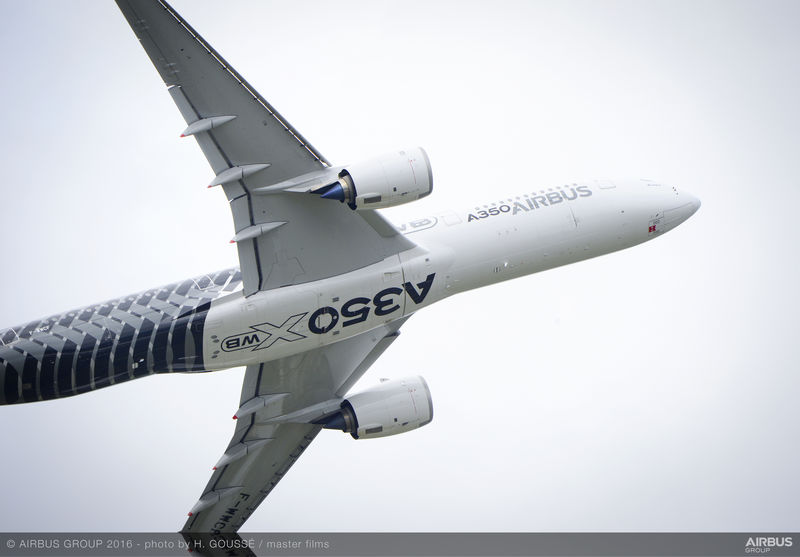Airbus predicts air travel gold for Oceania
30 November, 2017
5 min read


Australasian are known globally for punching above their weight in sport but Airbus predicts a growing economy will see flyers from Downunder maintain championship status when it comes to air travel.
Australians and New Zealanders already take more trips per year per person than Americans but the gap is forecast to widen for Aussies over the next two decades.
New Zealanders are the champions when it comes to air travel, taking an average of four trips per person per year in 2016 to beat Australians at 3.1 trips per year.
This compares to 1.8 trips per year in by US travellers, and 0.4 and 0.1 trips per year, respectively, in the giant emerging markets of China and India.
A combination of factors that includes 11 million extra people in the Oceania region’s middle class will see this jump over the next two decades to 5.6 trips per person annually in New Zealand and 4.9 trips per year in Australia.
By comparison, US per capita trips per year are expected to be just 2.5 in 2036.
When it comes to percentage growth, however, the big guys take the lead with India moving to 0.4 trips per year and China to 1.3 .
And they will not be alone as the middle class grows in emerging economies.
“We think that by 2036 about 83 per cent of all the people in th emerging markets will be taking at least one trip per year,’’ Airbus director strategic marketing and analytics Andrew Gordon told reporters in Sydney Thursday. “So that’s a very significant change in the flying patterns in these countries.”
The European manufacturer estimates the economy of the Oceania region, which includes the South Pacific islands, is expected to double by 2036 to $US2.7 trillion as the population increases by 25 per cent to 50 million.
About 95 per cent of the population will be considered at least middle class in global terms.
“This certainly feeds air travel and given your propensity to travel, it’s certainly feeding that too,’’ said Airbus vice president Pacific Iain Grant
A 4.4 per cent annual rise in travel to and from the region will see travel from emerging Asian nations almost tripling to 26 million passengers and numbers from developed Asian nations double to 18 million passengers.
The rise in inter-regional travel will outstrip other the average 3.7 per cent growth in other advanced aviation markets such as the US, Japan and Europe.
Domestic travel within the region will double to about 140 million passengers.
As a result, Airbus predicts, the number of 100-seater or above aircraft serving the region will rise by more than 600 to 1350 by 2036.
About 360 of the new aircraft will be single- aisle models and 250 will be twin-aisles. Airbus is still predicting that about 50 of the new twin-aisles will be very large aircraft seating more than 400 people, although it is not specifically nominating the A380.
Nonetheless, the number of very large aircraft serving the region had doubled since 2014, according to Gordon, who also noted the number of single aisle aircraft had increased.
“I think that’s partly a reflection of the fact that we’re seeing aircraft size growing generally,’’ he said. “So you’ve got a lot of bigger single-aisle aeroplanes, bigger twin-aisle aeroplanes so some of these volumes have moved around slightly.’’
Officials touted the A330neo as a candidate for trans-Pacific flights but suggested the market for ultra-long-range aircraft currently subject to a competition by Qantas was likely to remain limited.
Singapore Airlines is using the A350-900ULR to restart ultra-long-haul flights and Qantas has called on both manufacturers to provide an aircraft capable of flying non-stop between Sydney and London or New York.
But Grant said ultra-long-haul travel was "a complicated beast" and was likely to remain a premium, niche market.
Asked about suggestions Qantas may ask Airbus to consider an ultra-long-range version of A350-800, Grant said: “I think what we can say there is … we’re very excited about the Sydney-London project and we’re heavily involved with the all teams there.
“And we’re bringing out the A350-900ULR that’s going to do a 20-hour mission so we’re very comfortable them with that and we’ll continue to work with them to meet their requirements.’’
The aerospace giant also predicted the Oceania growth will generate a need for 12,000 new pilots and 13,000 new maintenance engineers.
The number of Australasian aviation “megacities”, defined by Airbus as cities with more than 10,000 daily long-haul passengers, is tipped to grow to five as Brisbane and Perth join Melbourne, Sydney and Auckland.
Passengers to Australia’s top five cities will double to 180 million passengers by 2036, while those to New Zealand’s top three cities will increase by the same amount to 38 million.
Next Article
2 min read
Qantas triples profit but misses mark

Get the latest news and updates straight to your inbox
No spam, no hassle, no fuss, just airline news direct to you.
By joining our newsletter, you agree to our Privacy Policy
Find us on social media
Comments
No comments yet, be the first to write one.
